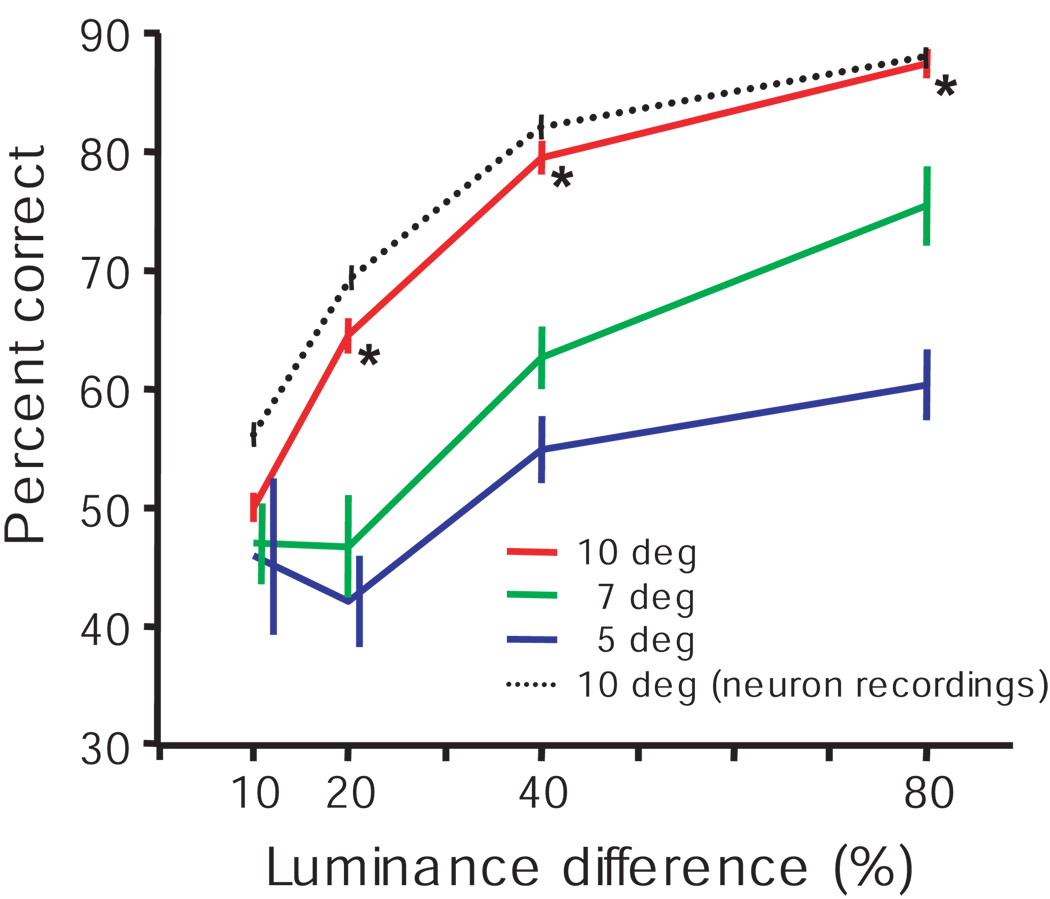Figure 9.
Performance was better when luminance stimuli appeared at expected locations. Behavioral data from 12 daily sessions, 6 from each monkey, were averaged. In these sessions, the green cue stimulus always appeared at 10° eccentricity. The luminance stimuli appeared at either 7° or 5° eccentricities unexpectedly on 10% of trials. The averaged percent corrects (±SEM across sessions) as function of luminance differences are plotted for stimuli presented at three different eccentricities: Red – the expected 10° eccentricity; Green and Blue – unexpected 7° and 5° eccentricities, respectively. For comparison, the average behavioral performance across all neuron recording sessions for both monkeys is also shown (black dotted line). Some of the error bars are shifted to the right to clearly present the data. Asterisks (*) indicate that the performance at 10° eccentricity in the behavior only sessions was significantly better than the performance at both 7° and 5° eccentricities (p < 0.05).

